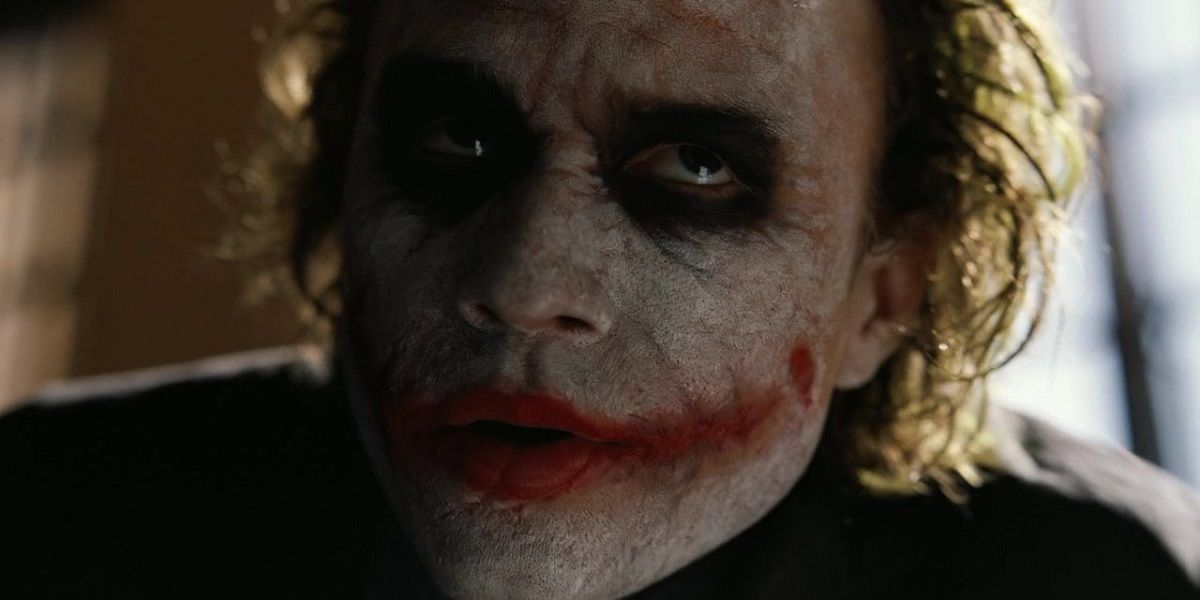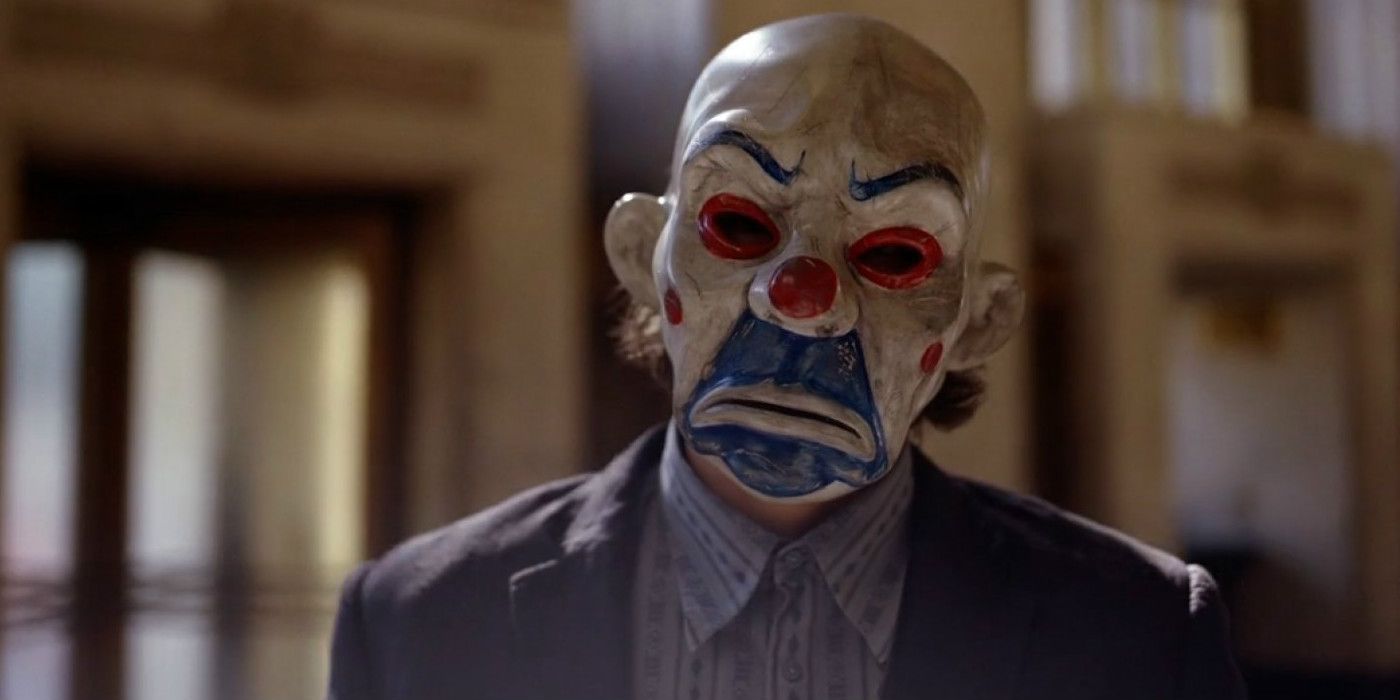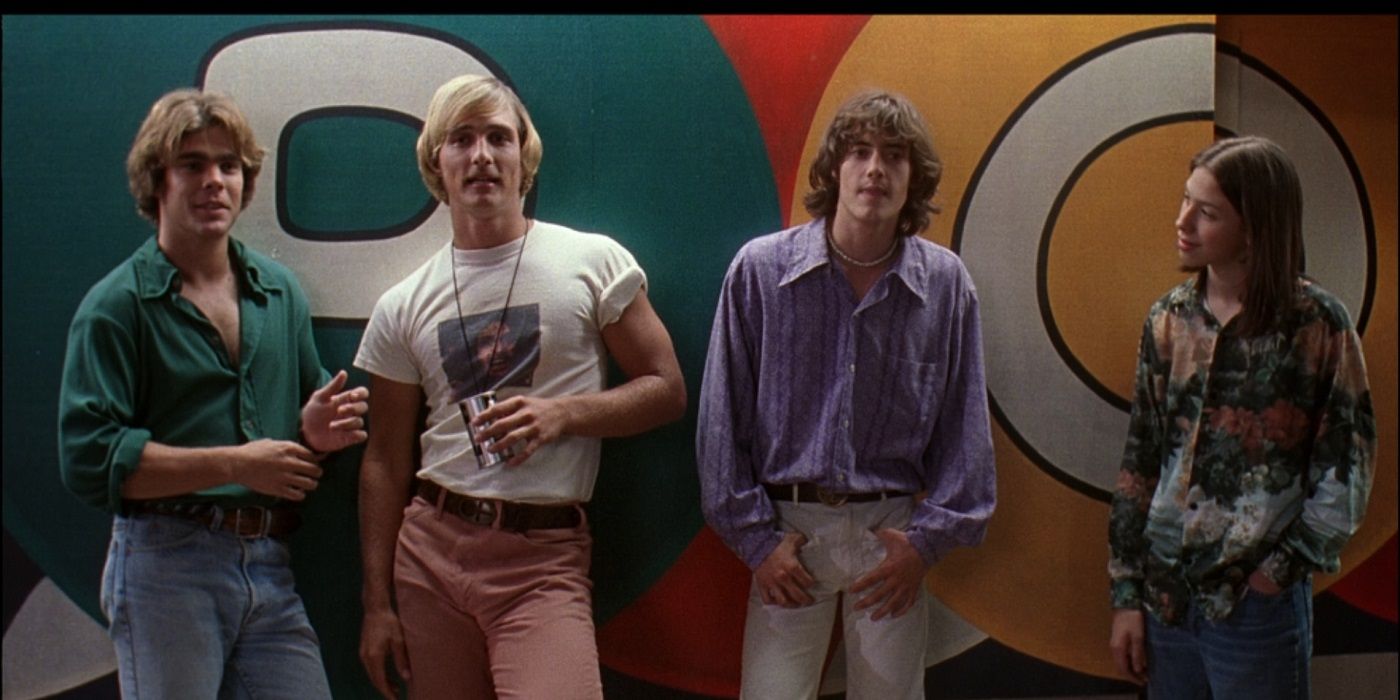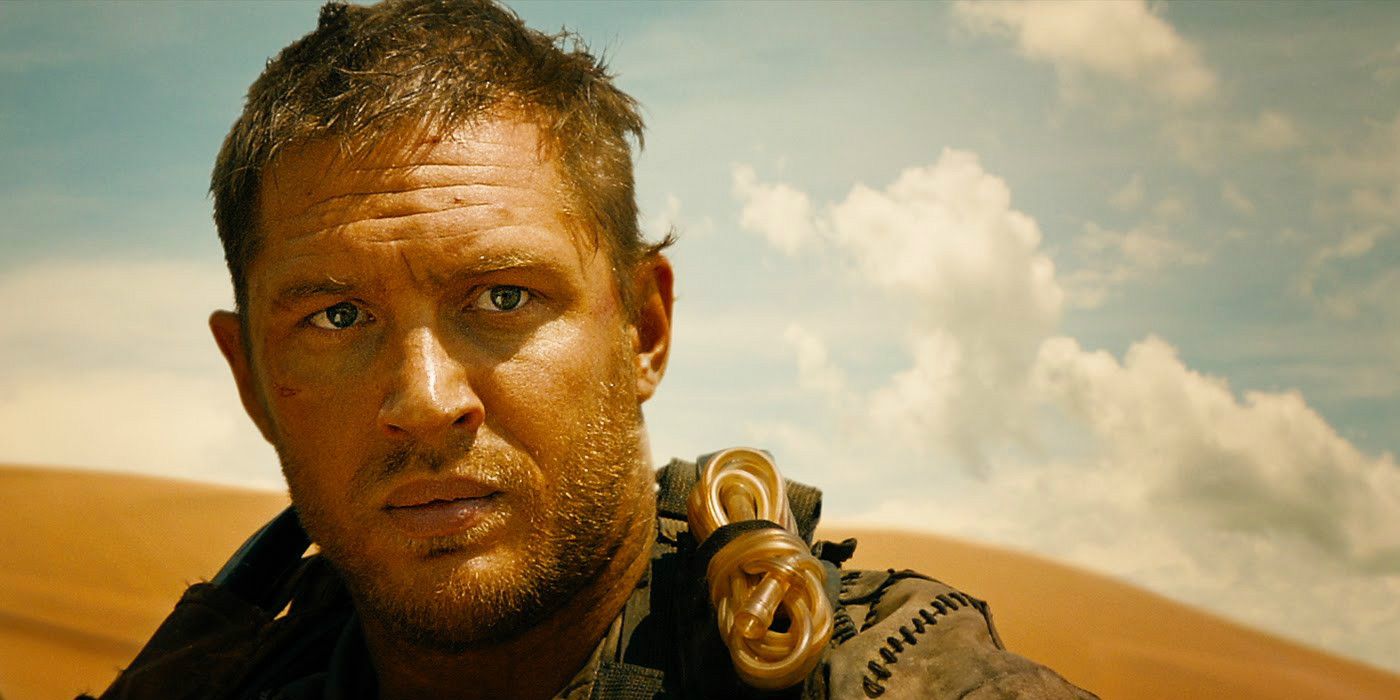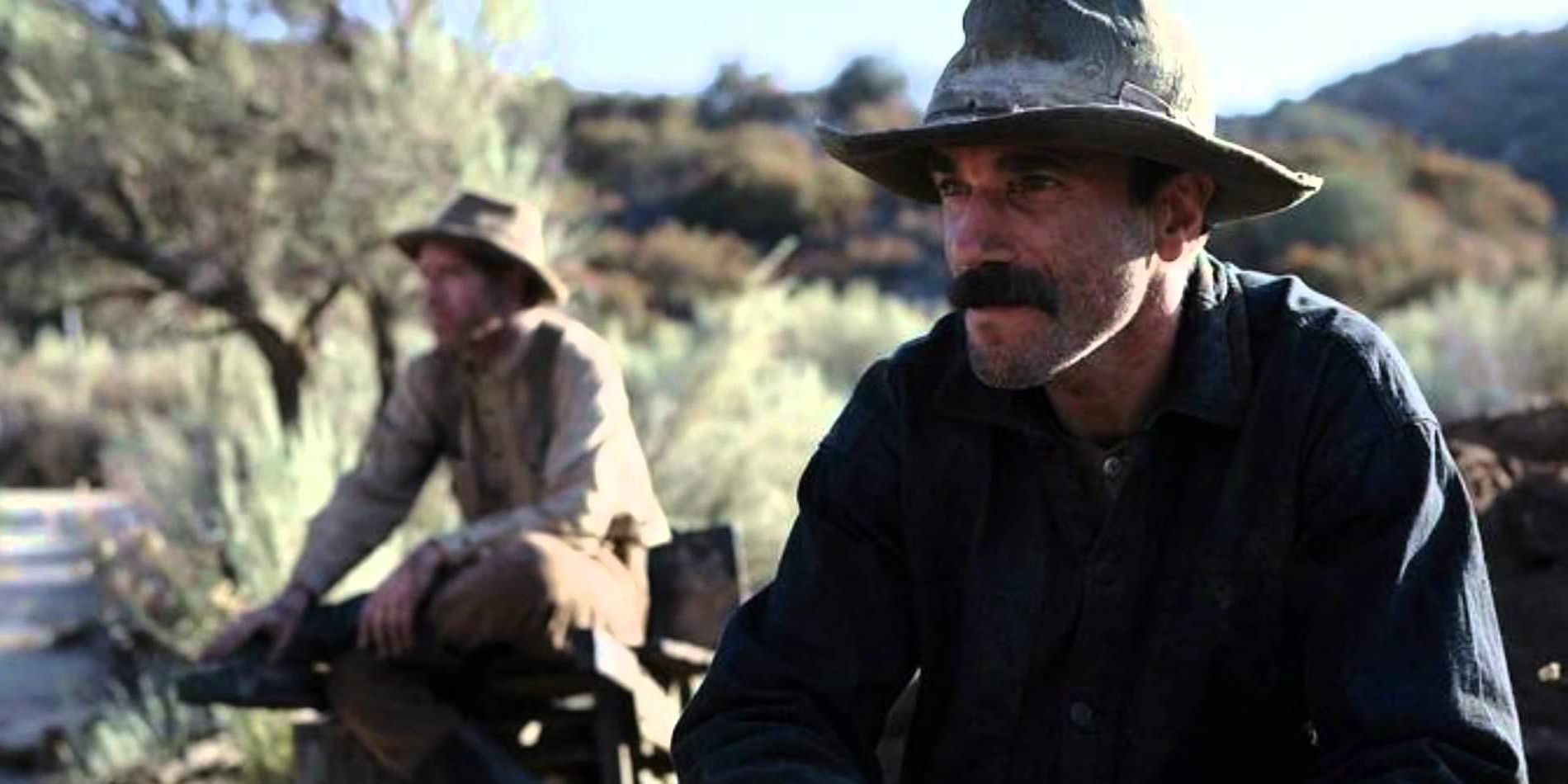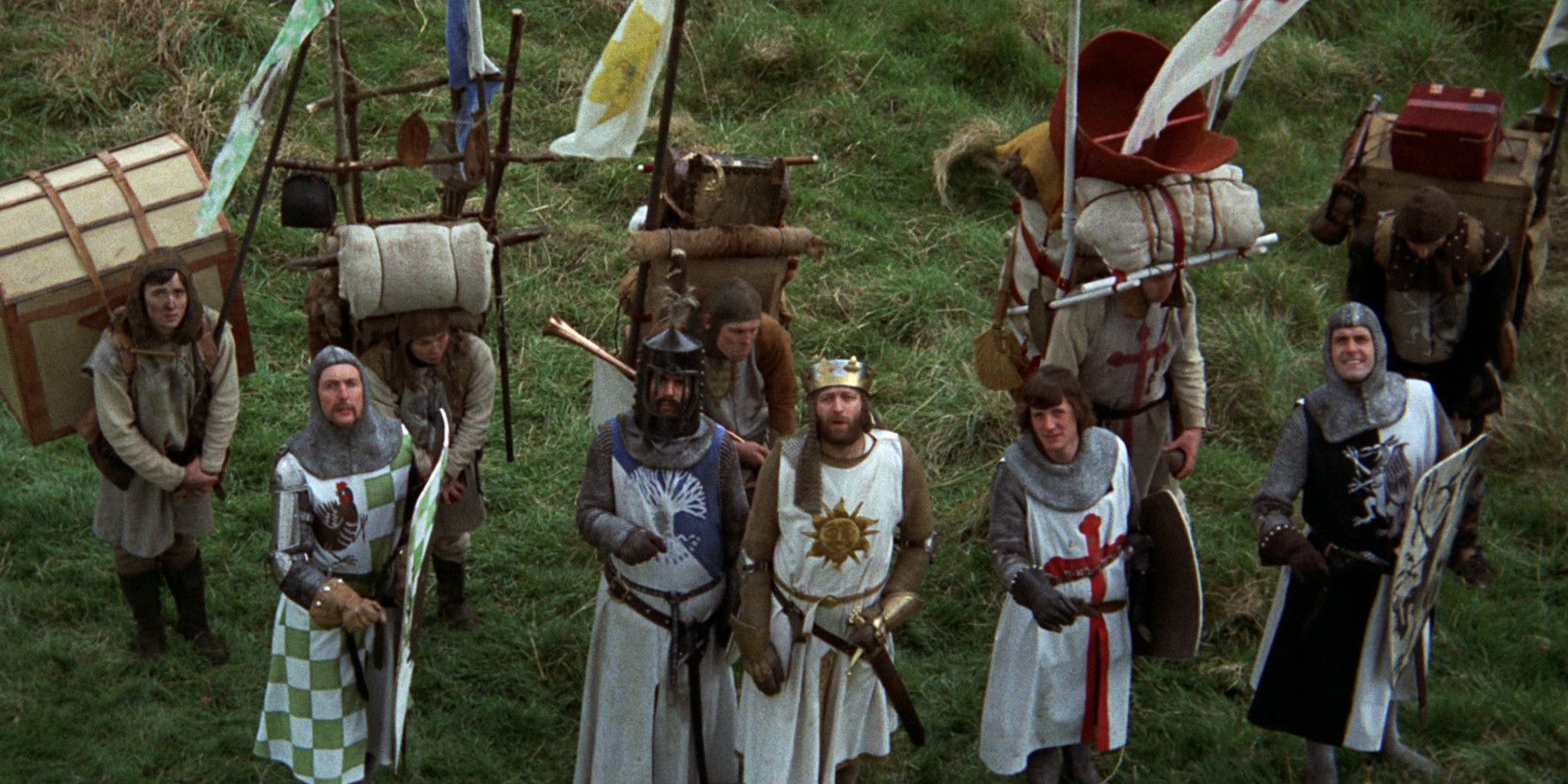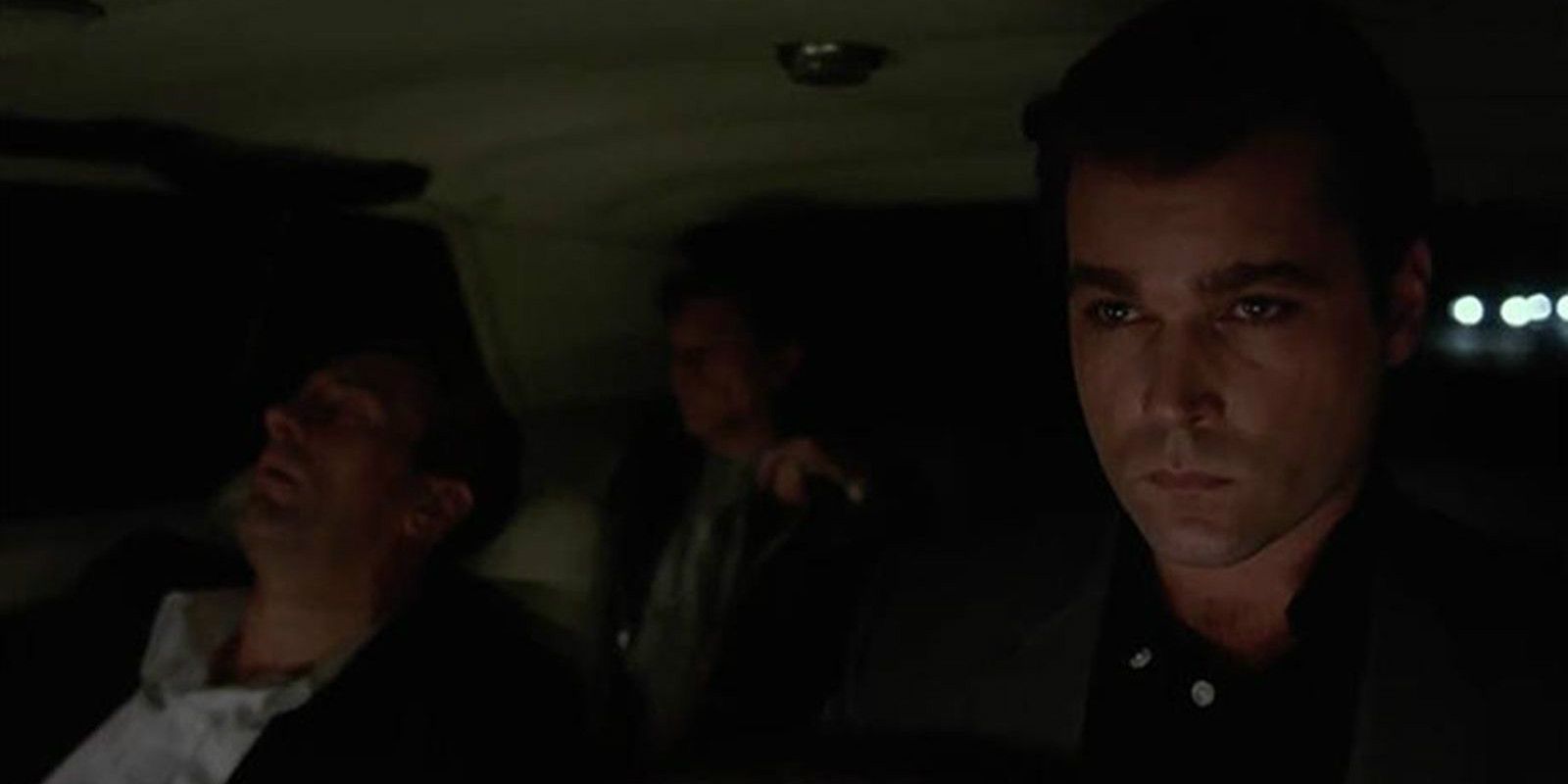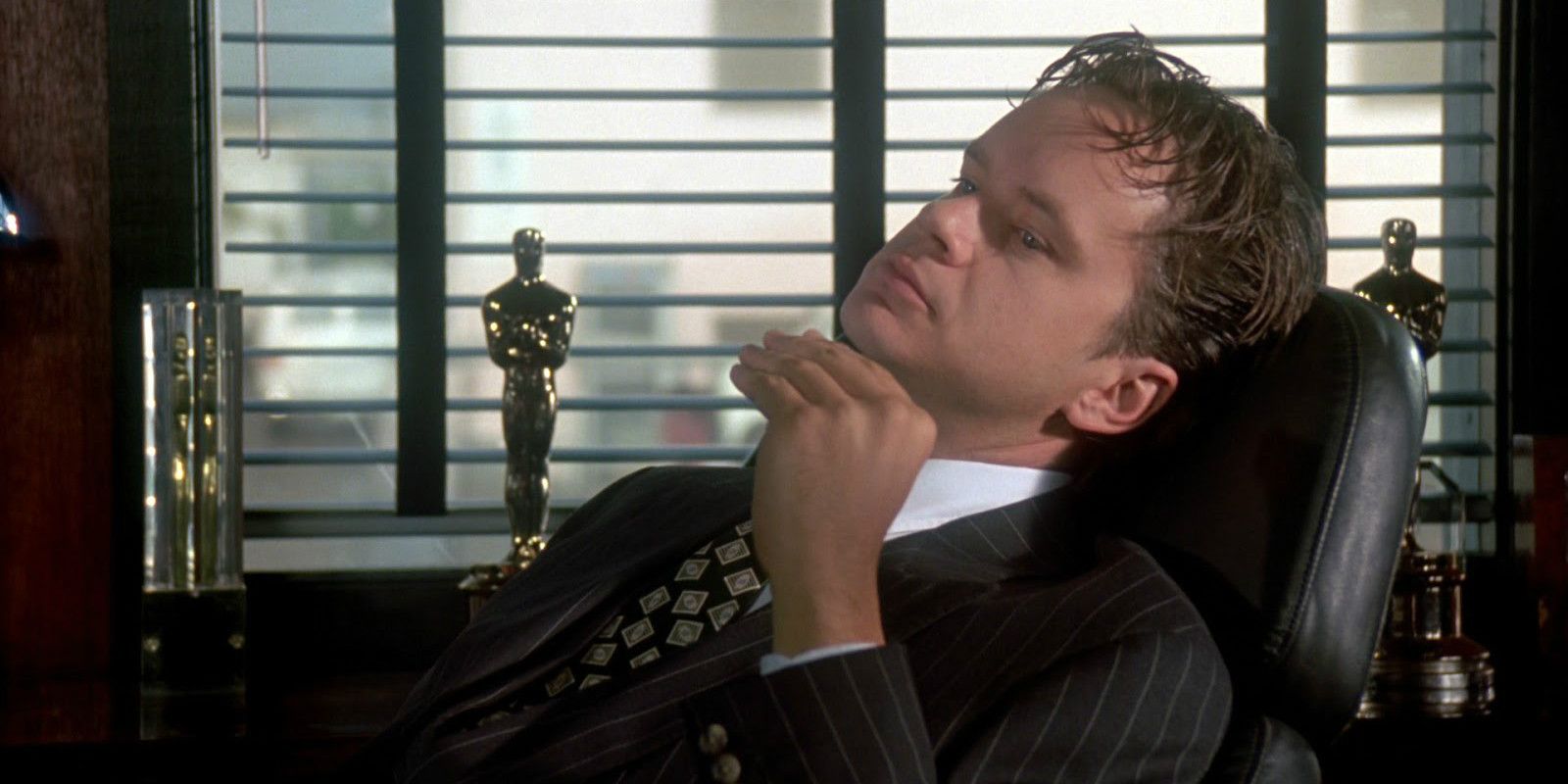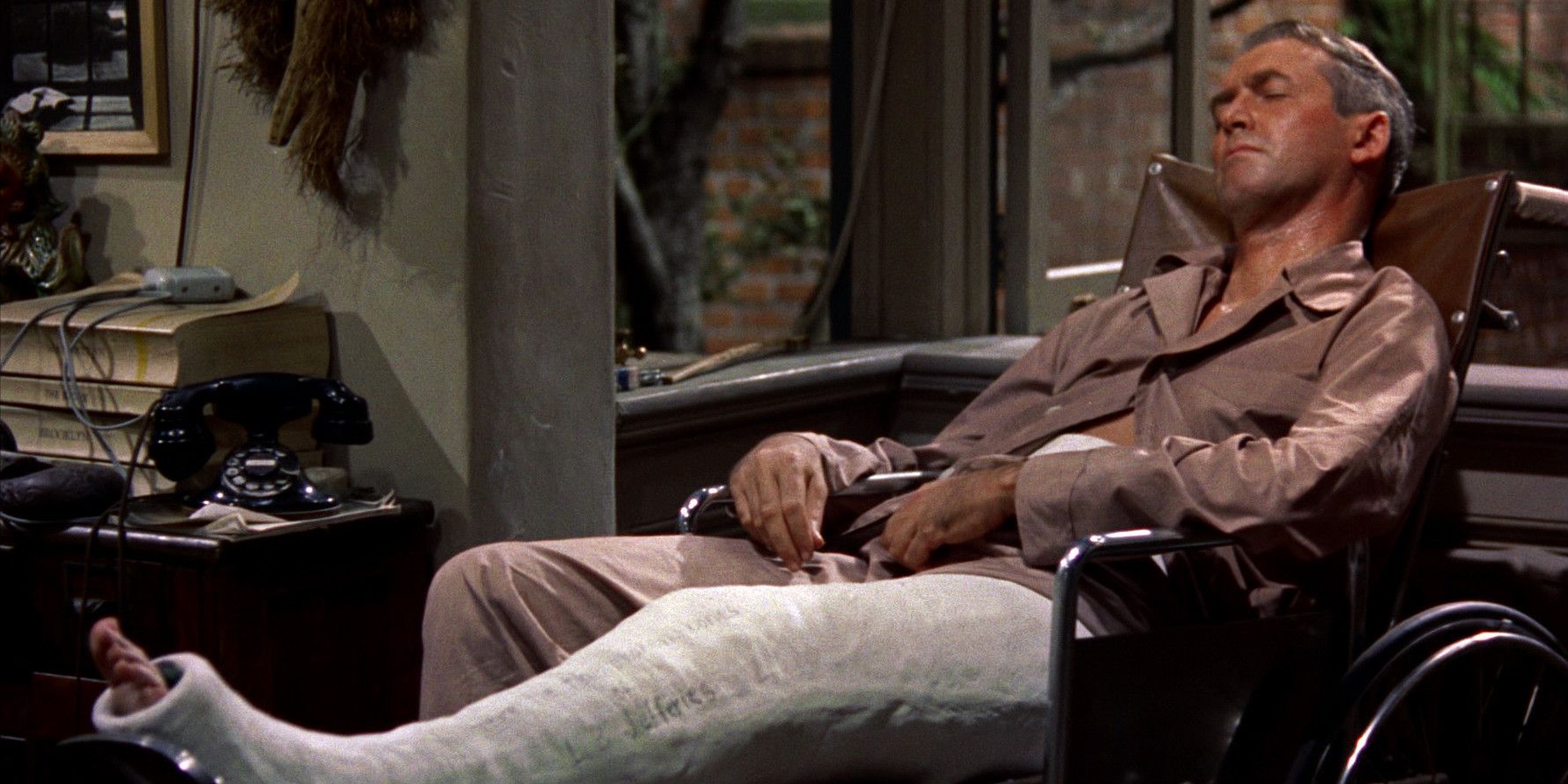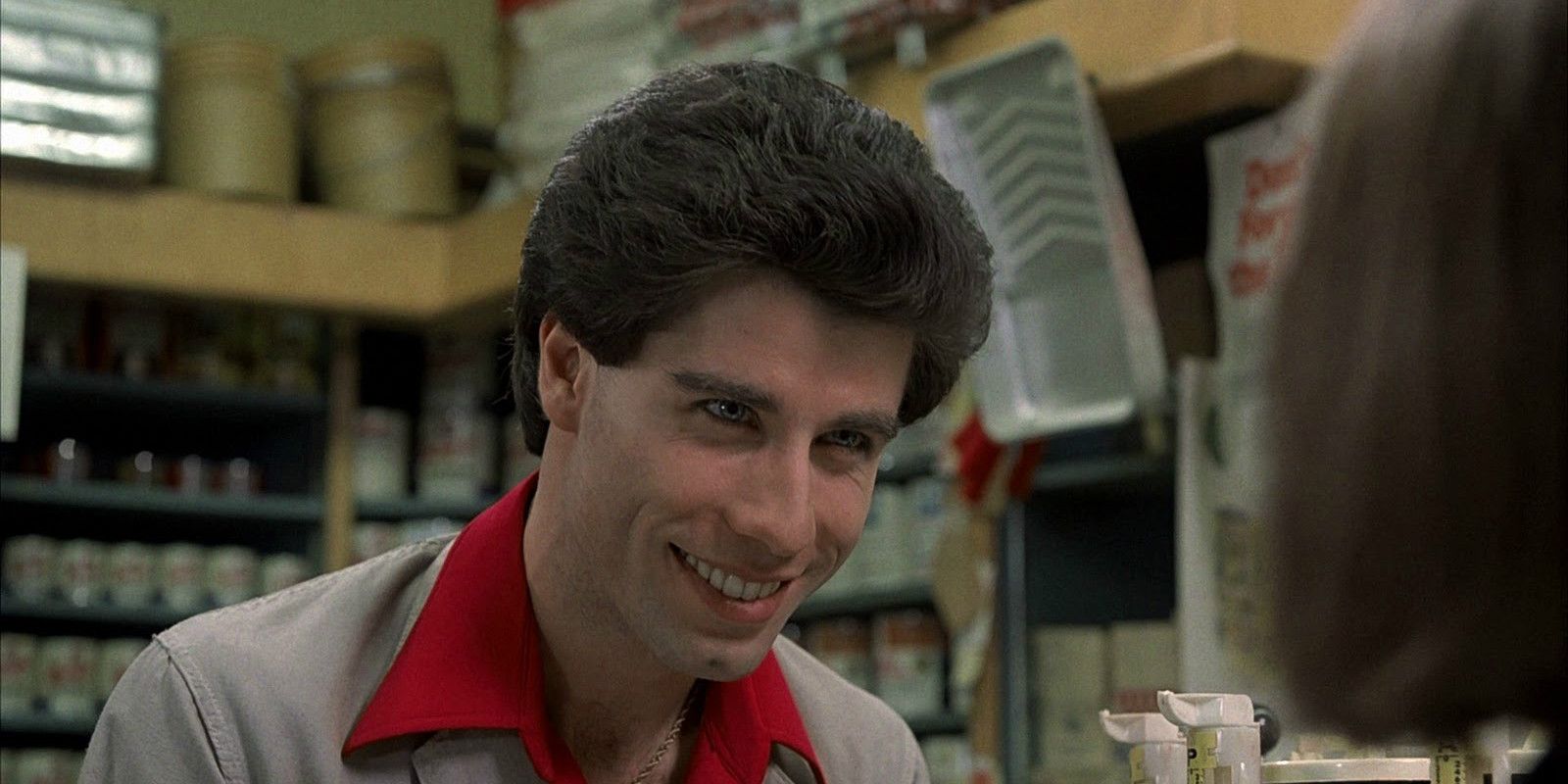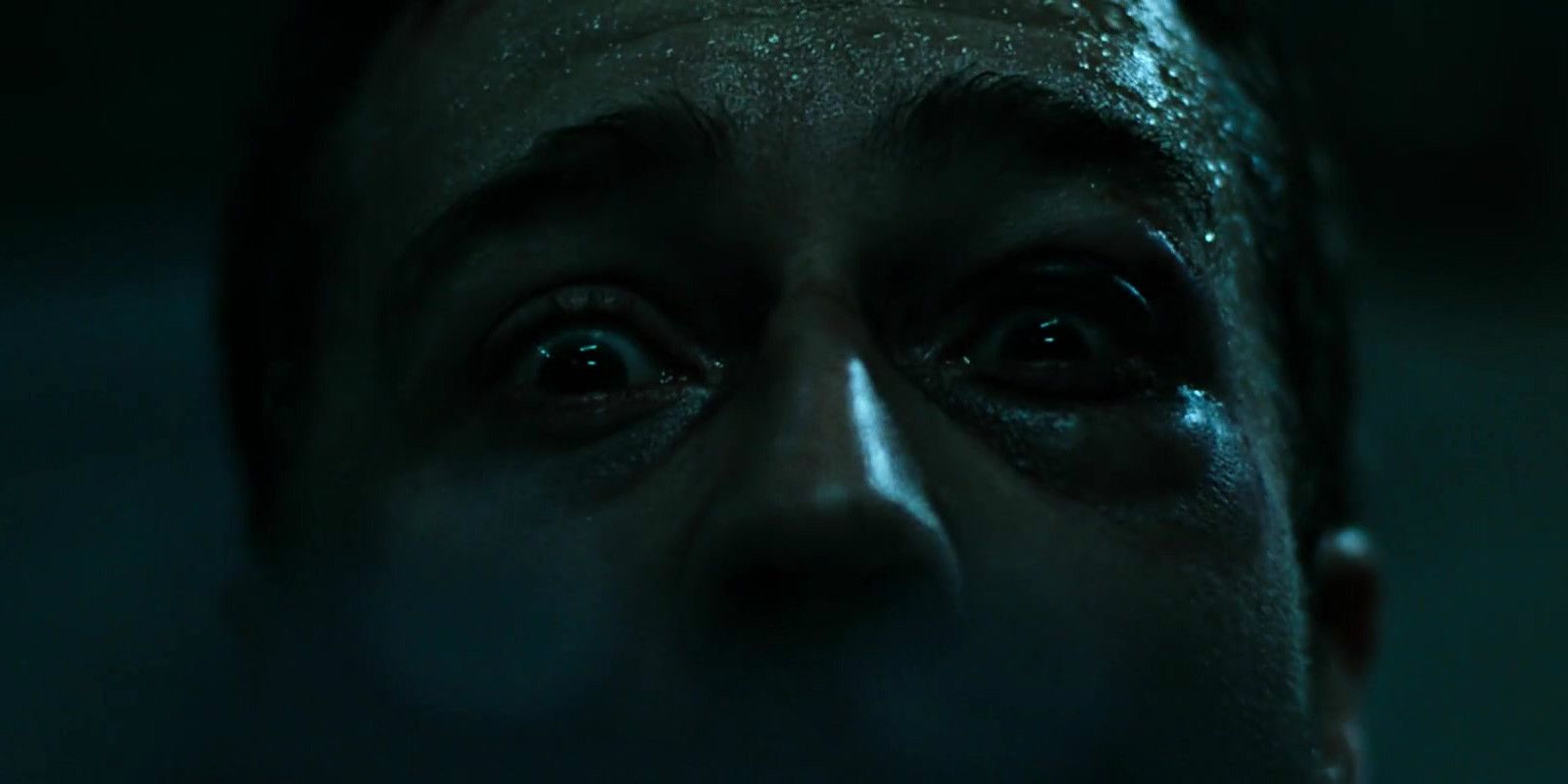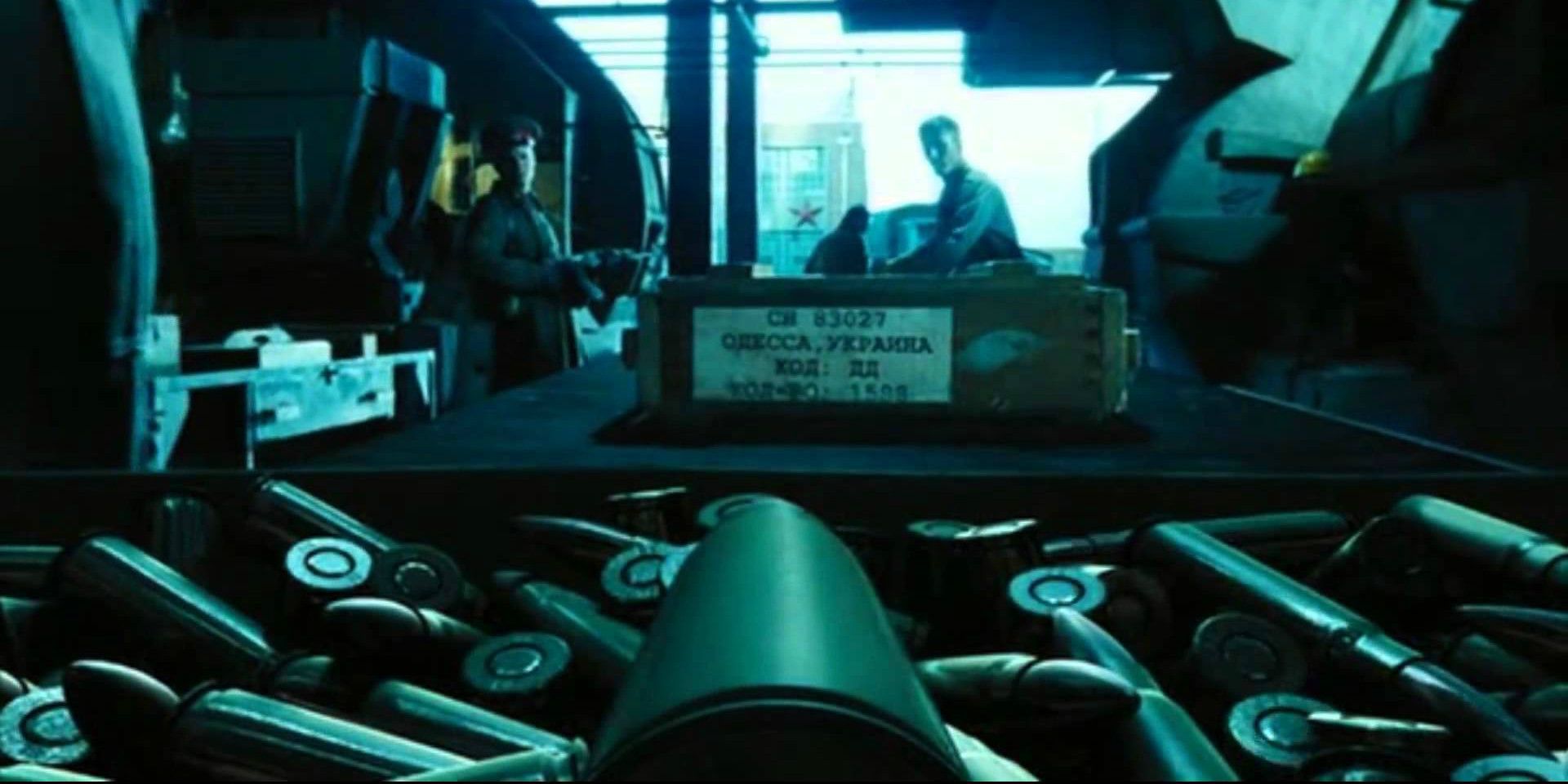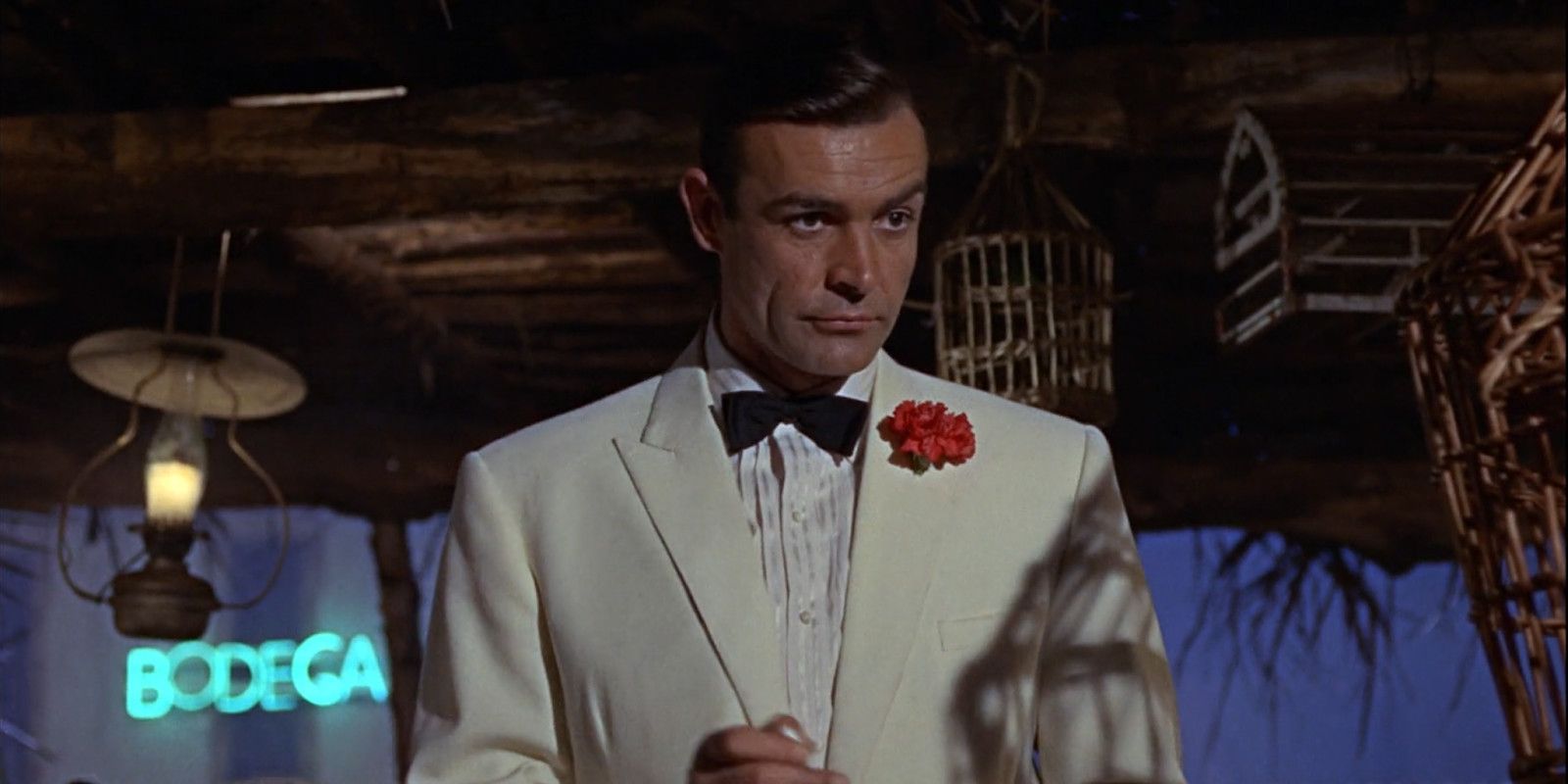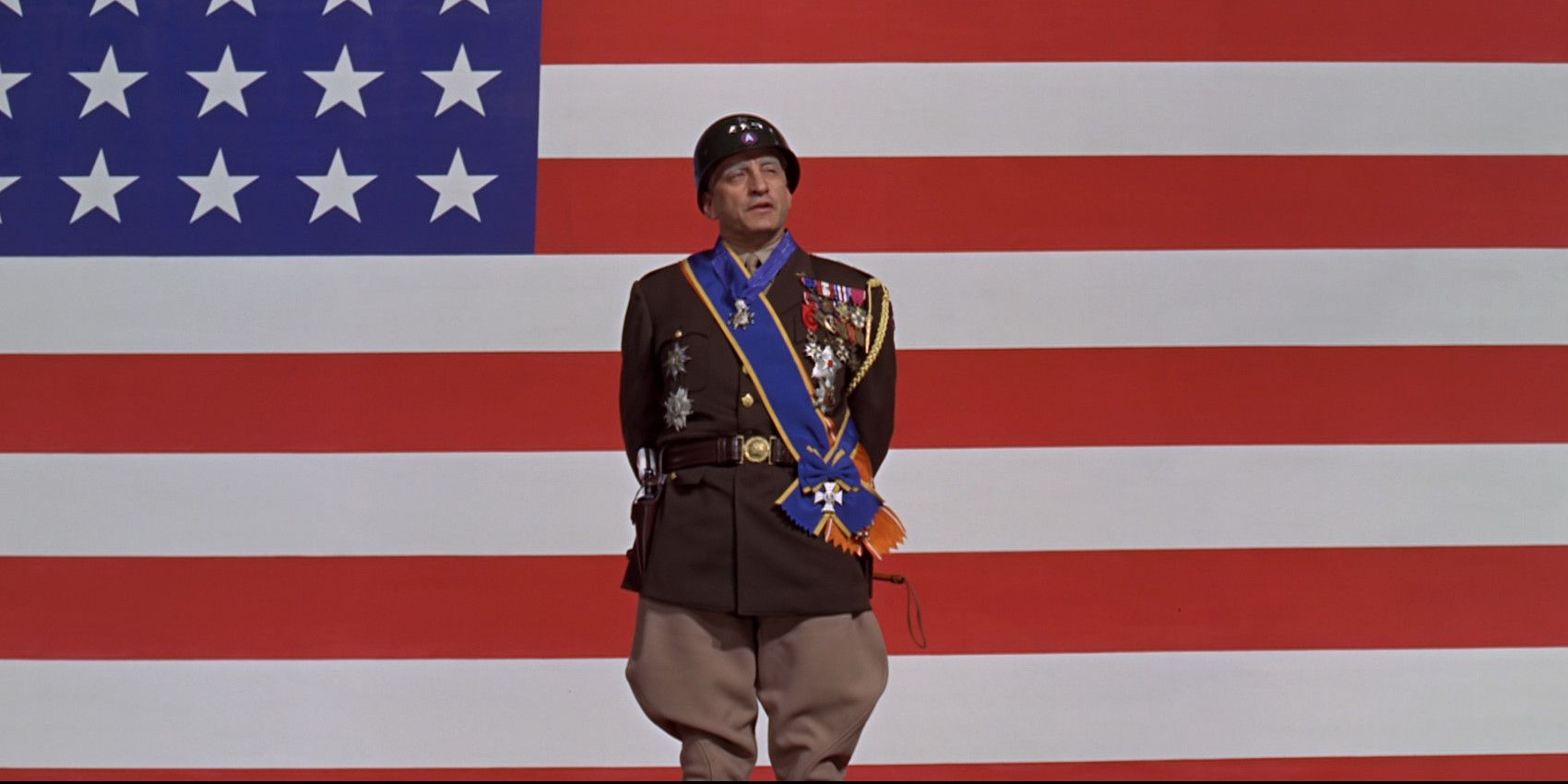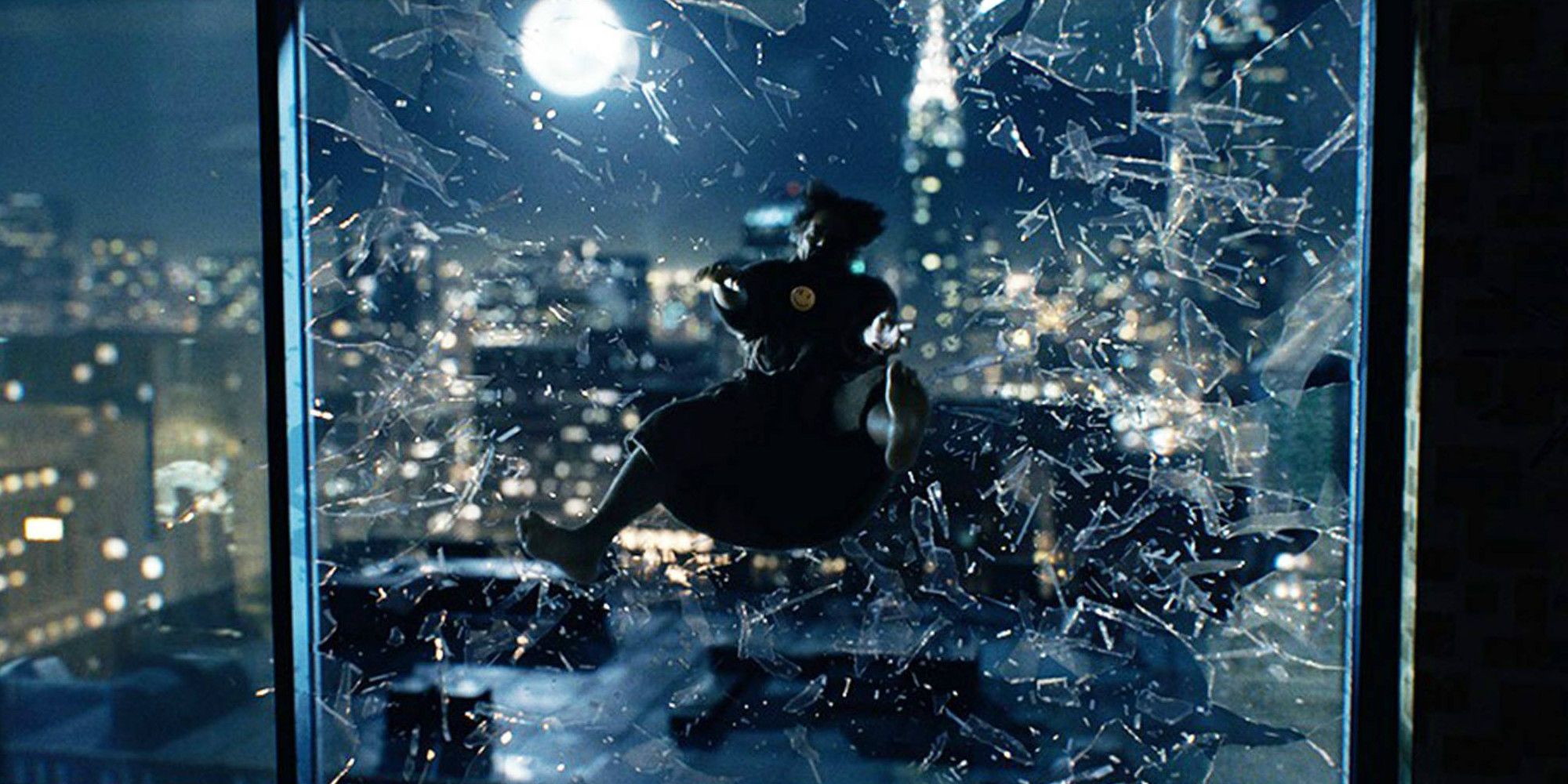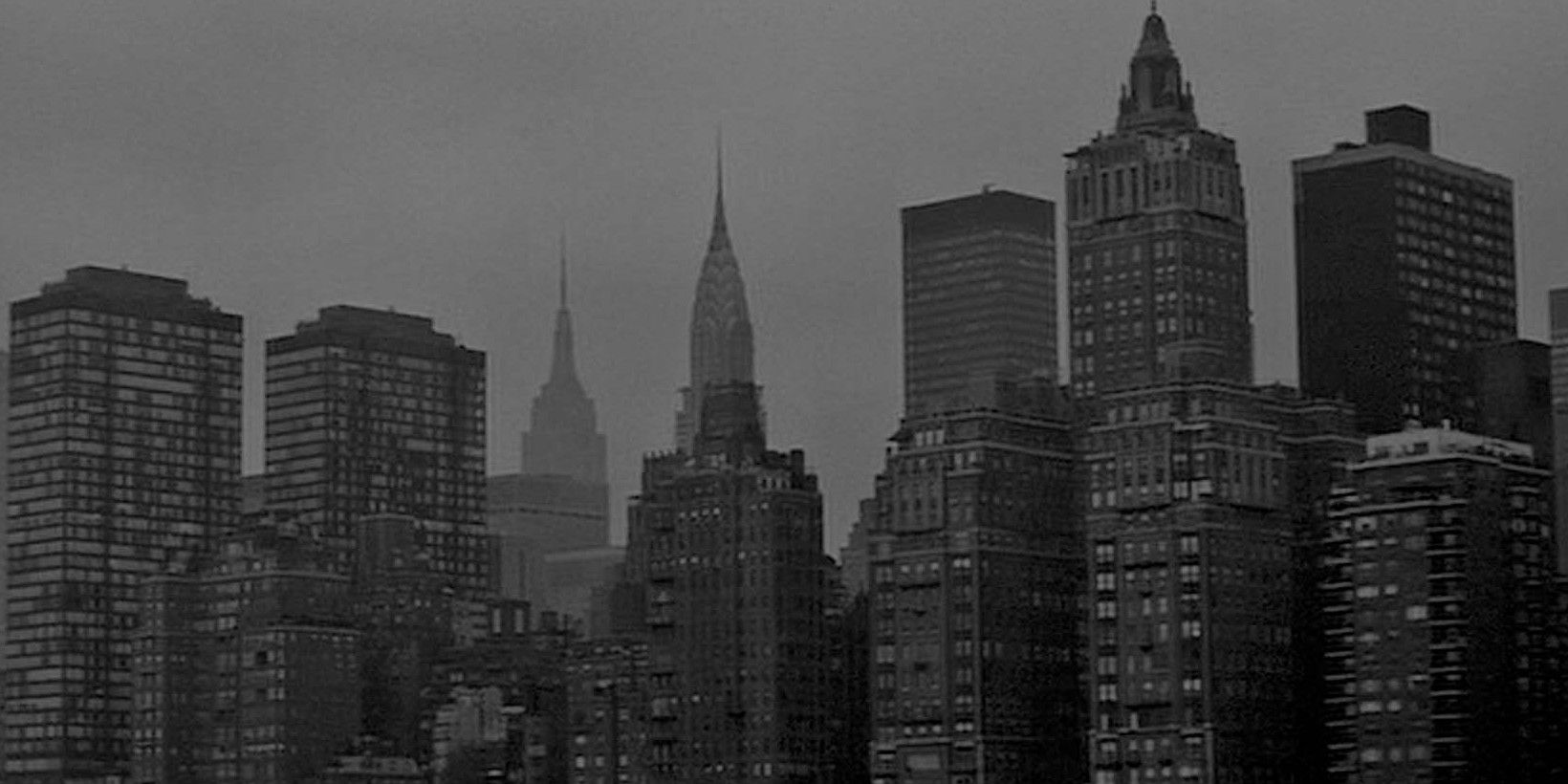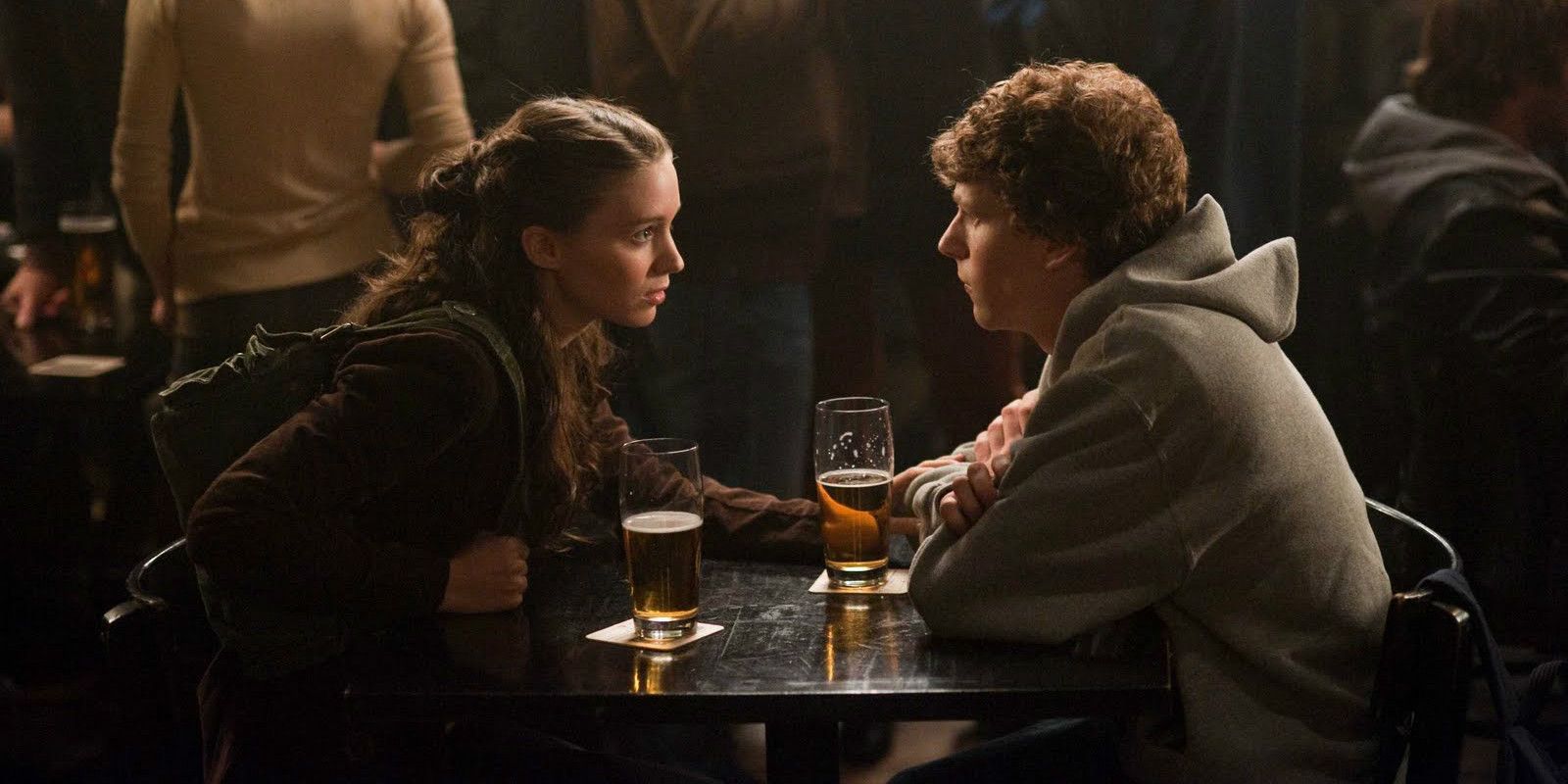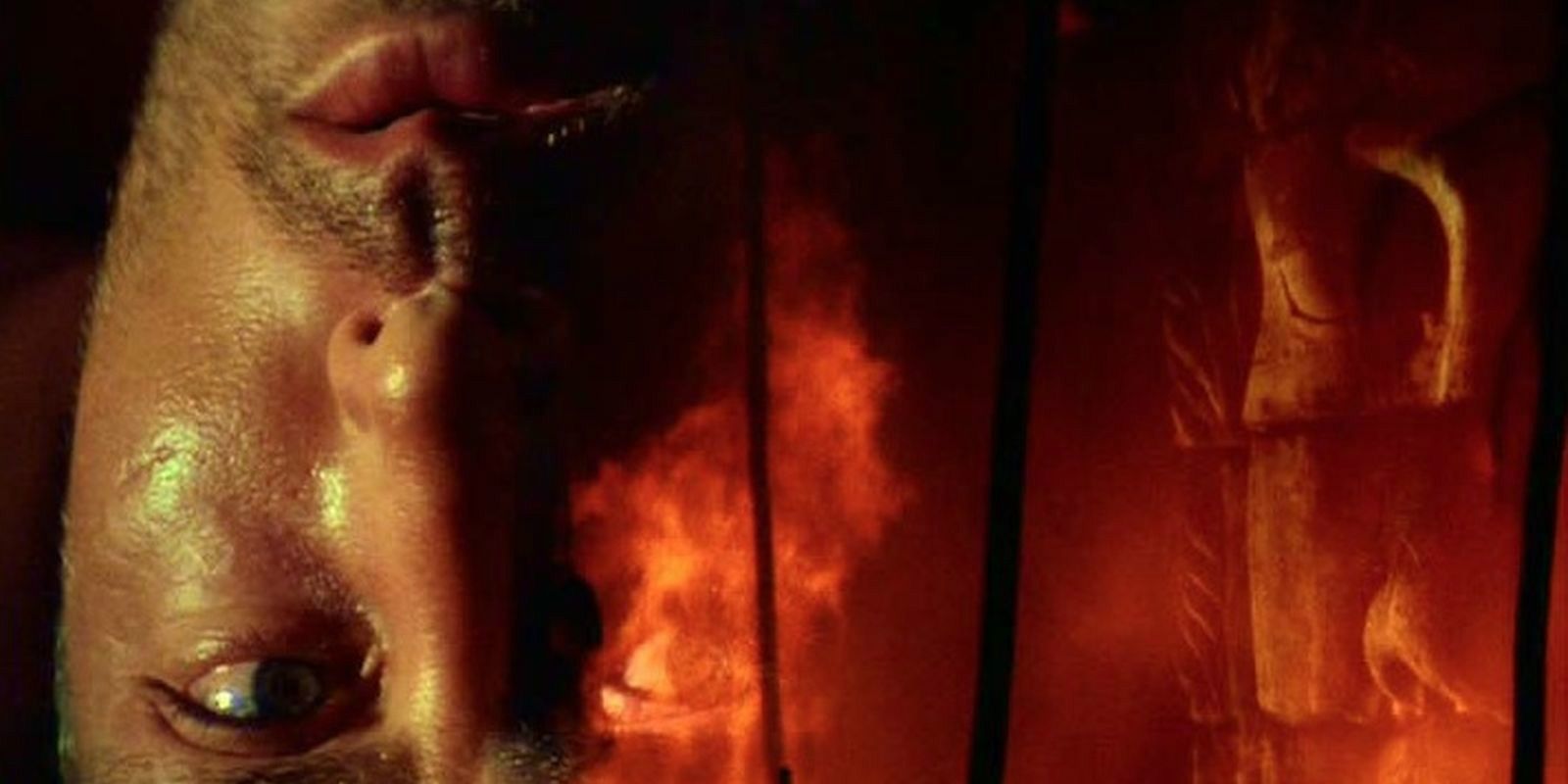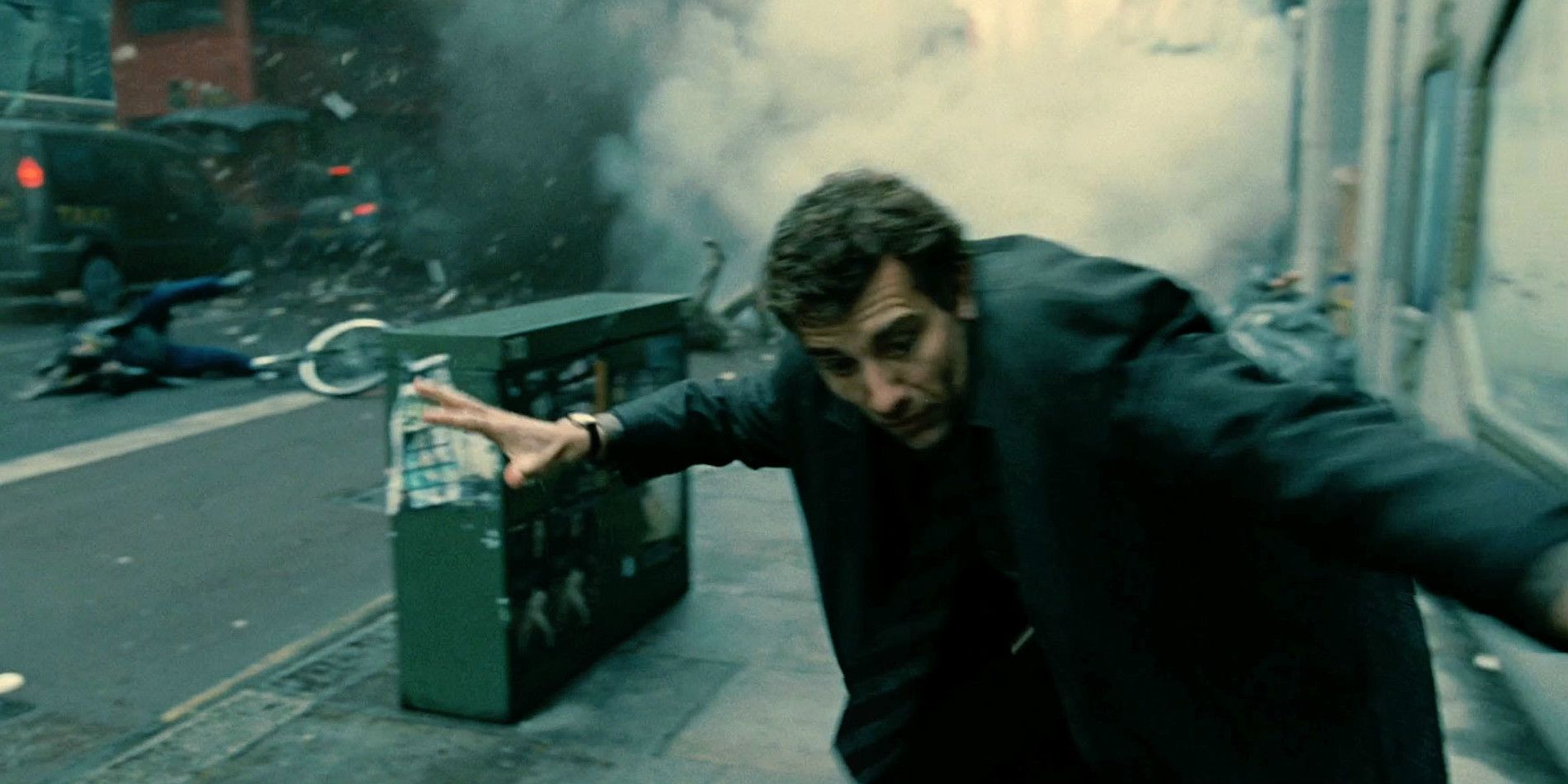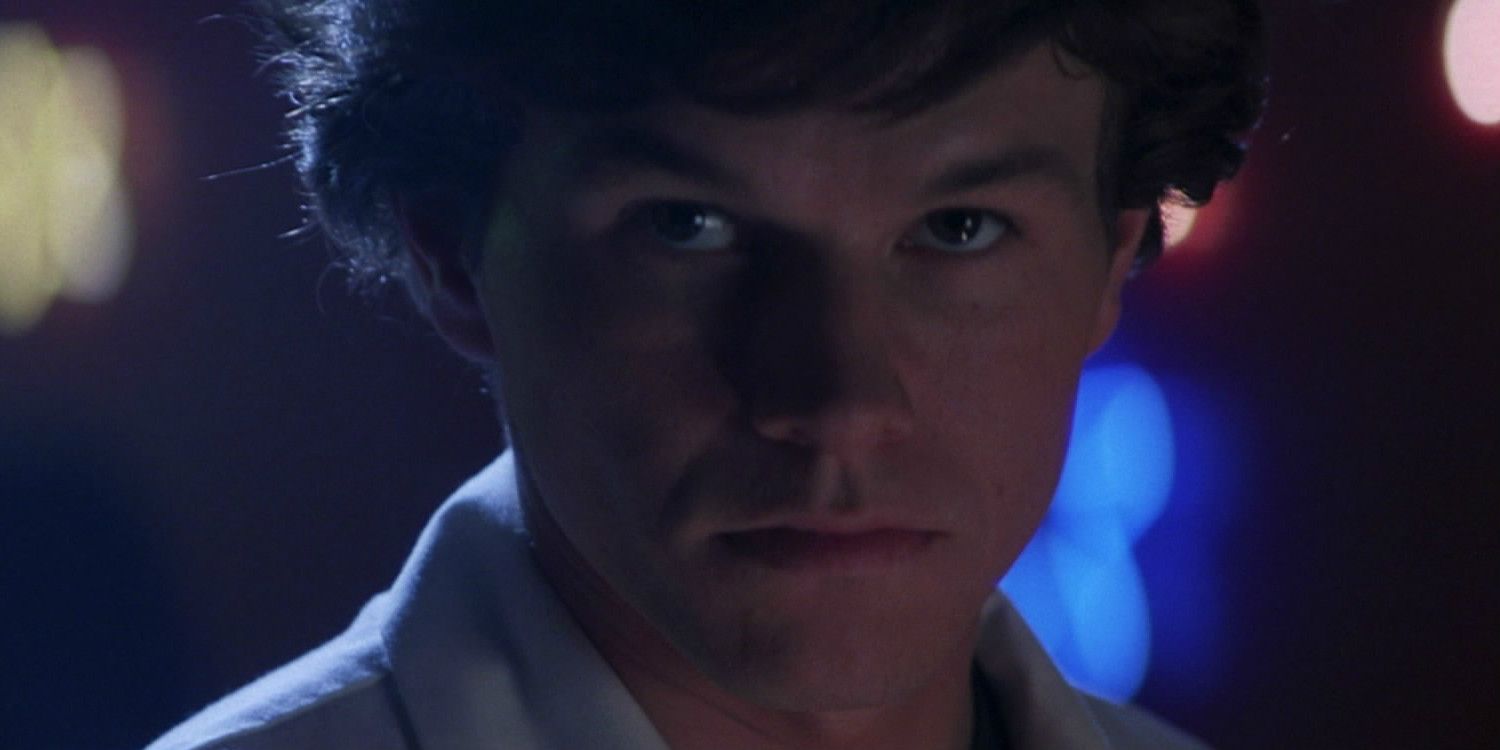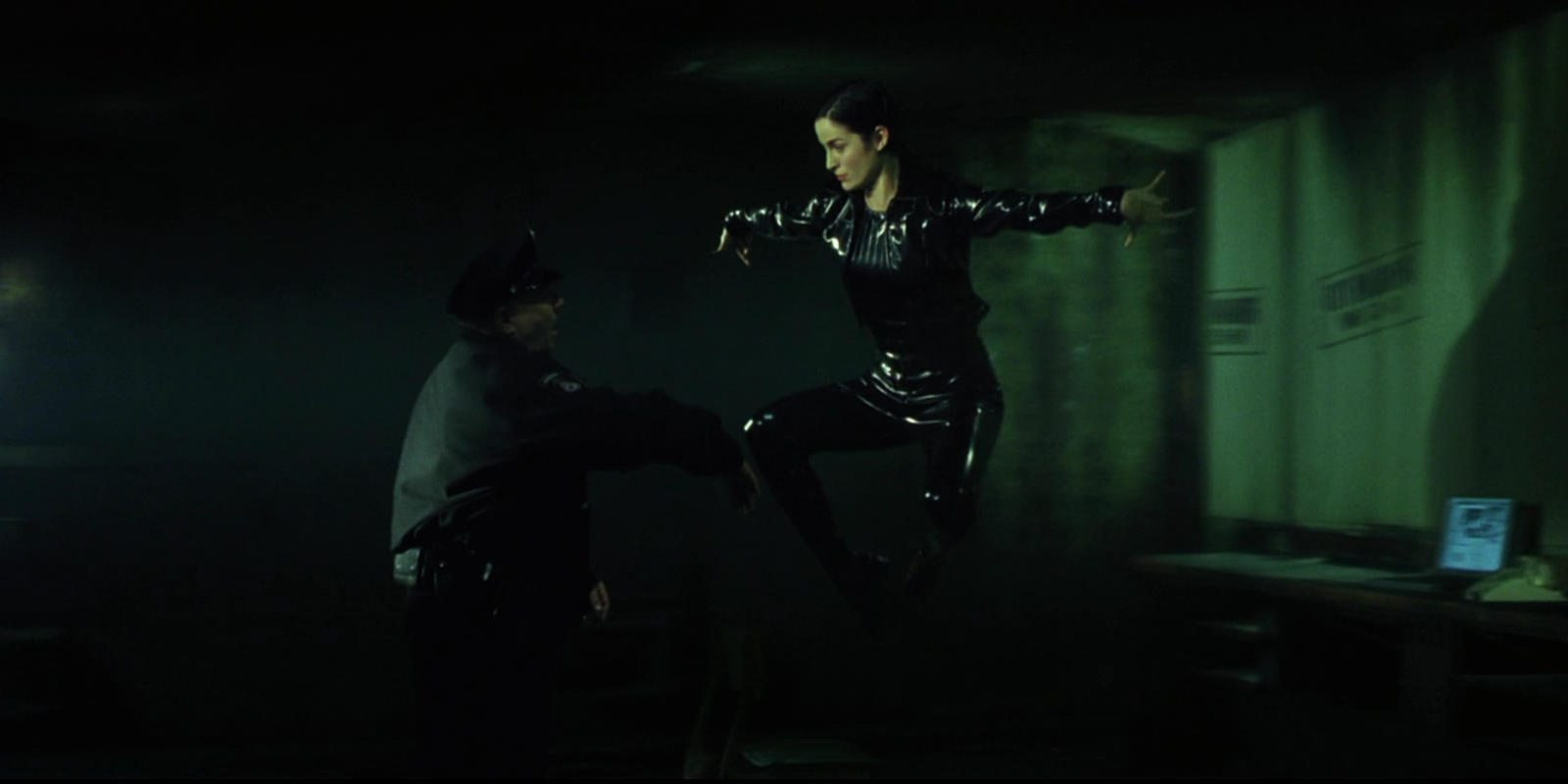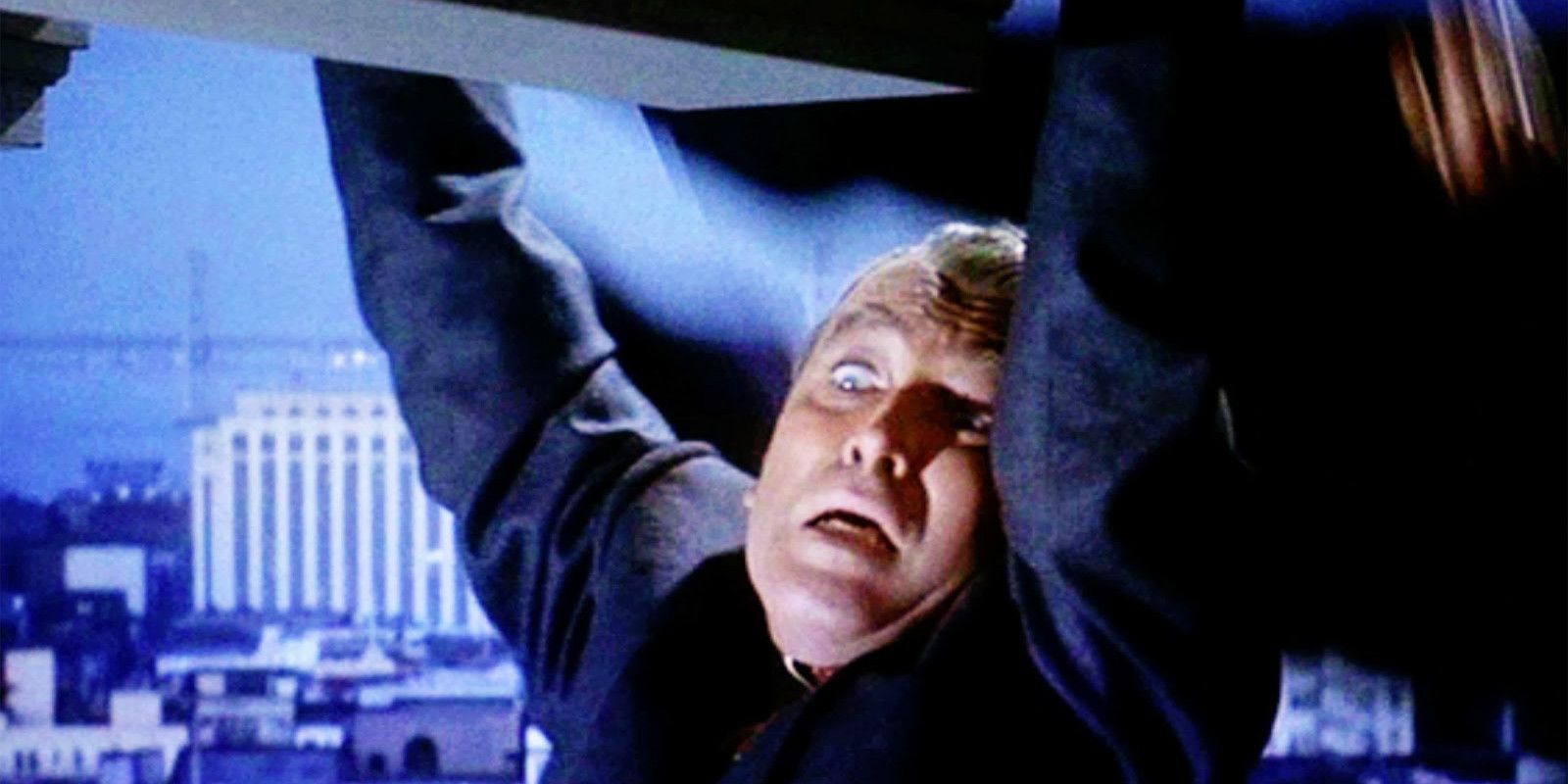The first scene of a film is an integral part of its storytelling. It establishes the tone, the setting or sometimes introduces the central characters. It gives the viewers motivation to keep watching. We all know that a bad ending can ruin a movie, but what about the openings?
Think about your favorite film of all time. Do you remember the exact moment it hooked you? Chances are if it’s your all time favorite, you’re a sucker for every minute of it. That’s what a great beginning does. It gets you in the mood and builds from there. It's no coincidence that the films on this list are also generally considered good. The writers knew what they were doing when they started their ideas. By putting their pens to paper, they crafted that perfect moment that put a smile or your face or left you at a loss for words.
Not every great scene can be represented in our forty entries, but we’ve gathered the very best in hopes that if you haven’t seen them already, you’ll go out and watch them -- and the stories that follow. They’re all truly worthy of the acclaim we’ve given them, even if the entire movie may not always exceed the quality of the intro. We’ve avoided including any scenes which weren't the very first things shown on the screen. We're sad to say, that means the Omaha Beach landing from Saving Private Ryan didn’t make the cut. Sorry everyone, but that's actually the second scene of the movie.
So it’s with thanks to the directors, writers and everyone else involved that we take the time to truly appreciate those great starts to some of our favorite films. Without further hesitation, we present to you the 40 Greatest Opening Movie Scenes of All Time. Links to each scene are included in the entries. You're welcome.
40. Dazed and Confused - Sweet Emotion
Sweeet emoootioon. Never has a song flowed so smoothly with the introduction of a motion picture. If there is a director who so perfectly encapsulated what it meant to be alive and a teenager during the 1970s, it's Richard Linklater. This year, it was his '80s themed picture Everybody Wants Some!! that set audiences ablaze, but back in 1993, Dazed and Confused made the Austin native the hottest man on the block. The story of the small town Texas high schoolers on the last day of class in May 1976 was a coming-of-age tale about hazing rituals and the passing of the torch between upperclassmen and incoming freshmen. It introduced us to the southern charm of Matthew McConaughey and showed us what it would be like if Ben Affleck was a dumb jock, but most importantly it resonated with people outside of any specific generation by capturing the essence of what it was like to be young and free. That moment of nostalgia, dating back to the age when you were still experimenting with sex and drugs, was captured with the first scene as we hear Aerosmith’s hit song begin to play.
In the first shot, an orange 1970 Pontiac GTO cruises in a circle around the parking lot of a high school as the song plays in the background. In the front seat, a young woman can be seen getting stoned, an indication that the film is true to its title. In the front of the school, the name is visibly revealed to be Lee High, home of the Fighting Rebels. The students can be seen walking in and out of the building with the longer hair of the era on full display. On a locker, the words “Seniors 1976” are spray painted in white, a noticeable sign that it’s the last day of school and the hazing is about to commence. As stoners are shown smoking on the side of the building, other teens are hanging out by their cars waiting for the first bell to ring. Meanwhile, the nerdier students are playing cards while one kid is shown in shop not wearing his protective goggles despite a sign telling him to do so. As the bell finally rings, the song fades away and everyone rushes to class. The time is 1:05 PM, and the day has only just gotten started.
39. Mad Max: Fury Road - A World of Fire and Blood
To call the post-apocalyptic wastelands of George Miller’s Mad Max franchise the place where road trip movies go to die would be an accurate description. In Miller’s vision of the future, water is a scarcity and human bodies can be used as blood banks. If you want to pay your dues, you go out in an epic, fiery collision and maybe you’ll get to meet your maker in Valhalla. It’s a world of ceaseless torment, plagued by depravity and constantly on the cusp of becoming extinct. Survival is the only way, so if you don’t want to be killed by a dictator like Immortan Joe, then you need to learn a thing or two about the world you're living in. Fury Road gets right into the teeth-grinding grit of its two hour joy ride by showing everything you need to know.
Mad Max Rockatansky (Tom Hardy) introduces you to his world of chaos through narration before stepping on a lizard and eating it whole. This is a world of fire and blood, and the only means of staying awake is by being faster than everyone else. With the fanatical War Boys of Immortan Joe’s citadel fast approaching, the chase is on. Max hops into his car and drives off into the dry desert plain before crashing his car and eating the dirt. Chained to a wall, where he is subsequently surrounded and tattooed by his captures, he runs for his life while being haunted by the victims of his past. He jolts for the exit but finds only a cliff, hundreds of feet about the waste below. He is pulled back into the confines of his new prison, where his path will cross with Immortan Joe and his war leader Furiosa when the latter plots to steal the cult leader’s many wives.
38. There Will Be Blood - The Price of Oil
In the deserted mountains of New Mexico, a lone prospector frantically drudges over a pit mine hole from inside the bowels of the earth. Covered in grime and without a word spoken, he grinds away with a pickaxe as he hacks at the interior walls. He’s mining a potentially lucrative ore vein and from his hermit-like appearance, we know he hasn’t a dime to his name. All that will soon change though, and when it does, this man will rise from the earth renewed and with all the wealth he could ever want. His name is Daniel Plainview, and he’s about to become one of the most powerful oil tycoons the world has ever known.
Paul Thomas Anderson opens There Will Be Blood with a depiction of the risks it takes to earn power in the vanishing American frontier. In the nine minutes it takes him to set up his early 20th century story about the Southern California oil boom, we see a man’s desire to strike it rich. He’s put everything on the line. He dynamites a lode before falling from the tunnel ladder at the top of the hole in the ground and breaking his leg on the floor below. With little but the pedantic breathing and ominous score to illustrate the obscenity of one’s man obsession, we’re introduced to one of film’s most intense performances. Daniel Day-Lewis is at the top of his game from the beginning, and the resulting character study that comes afterward only cements his take on capitalist power as one of the best we’ve ever witnessed.
37. Monty Python and the Holy Grail - Migrating Coconuts
For years, the Monty Python sketch comedy group reigned supreme over the British comedy empire. The members of the group (John Cleese, Terry Gilliam, Terry Jones, Graham Chapman, Eric Idle and Michael Palin) all impressed with their signature satire focused on the everyday absurdities of life. Their crème de la crème, however, was Monty Python and the Holy Grail, a tale of King Arthur and his knights of the round table and their quest to find the often sought and highly coveted holy grail. The satire and quick-witted banter gets a head start before the movie even begins with a wacky credits sequence translated into Pidgin-English-Swedish before deviating into a story about a woman carving her initials into a moose with an interspace toothbrush. The titles’ translator is fired on the spot and the digression is looked over as the movie gets underway.
A horse’s gallop from the distance is recreated using the sounds of two coconuts banging together as Chapman enters the scene as King Arthur on an imaginary horse. The seemingly non-existent budget for the film provides ample reason to laugh, as neither Arthur nor his squire Patsy actually have a horse; thus, Patsy is left creating the noise as they arrive at a castle in hopes of adding members to their round table. Instead, they spot only an inquisitive guard, who immediately questions Patsy banging the coconuts together. He wonders where they would get a tropical fruit in England. The ceaseless, irrelevant banter makes for a dizzying open to a movie that only becomes more maddening as it goes on. Right off the bat, viewers are asked to give in to the madness and accept the aimlessness of it all. The result is among the best written comedy moments in film history.
36. Goodfellas - Noise in the Trunk
“As far back as I can remember, I always wanted to be a gangster.”
Those are the first words narrated by Ray Liotta’s Henry Hill in the opening scene of Martin Scorsese’s Goodfellas. Driving down a back road at night, this wiseguy picture begins with little more than an image of a car’s tail lights. Everything seems innocuous enough until we get the first look at Liotta, Robert DeNiro and Joe Pesci in their clean-cut suits inside the car. They’re gangsters with a secret. As they sit in silence with the intentions of finishing off a job they have tucked away from the audience, a thump comes from the rear, and our suspicions about the nature of the characters are confirmed.
As the car pulls off to the side of the road, the noise from the trunk grows louder. Hill prepares to open the back of the car while his partners in crime hold a knife and gun. The trunk swings open and after a brief hesitation from the three criminals, a bloodied and gagged man on the hinges of death is shown lying down in a panic before being repeatedly stabbed and shot until death. With the situation now handled, Hill finally speaks as he begins narrating the story. As a moment beginning in media res, Scorsese wastes no time imposing the violent crimes of these three men onto the viewers. Lunging headfirst into the world of organized crime, Goodfellas proves to an unpredictable look at one man’s journey into the criminal underworld. Nothing shows how far that world goes more than a murder in the first few minutes of your movie.
35. The Player - Movie Pitches
Hollywood is a world all its own, overrun by treachery and paranoia. If ever there was a motivation for a suspense film, it’s the heart of where the industry lies. To become a bigwig studio executive, you’ve got to step on a few heads. That’s just how the game works. Unfortunately for Griffin Mill (Tim Robbins), he’s angered too many people to walk away clean. It should be no surprise then that he received an anonymous postcard from a ticked off screenwriter looking to cut him down, but with the death threat now permanently on his mind, his paranoia proves to be the start of his breakdown. When Mill incorrectly identifies a disgruntled writer as the one sending the threats, a fight breaks out, and he finds himself murdering the man in a fearful rage. When the postcards continue to show up, Mill realizes the mistake he’s made and must now deal with the impending threat of the anonymous figure, whose knowledge of the accident now gives him leverage.
The opening tracking shot of The Player lasts nearly eight minutes without a cut before delving into Mill's story. Director Robert Altman reportedly took fifteen takes before finally settling on the best version of the scene. As the sequence begins, an off-screen director shouts out for the film to begin. Over the next few minutes, the camera follows various characters as they appear on and off. A secretary runs an errand. Mill arrives at his office where he’s pestered by a screenwriter. Two men in formal dress talk about the deteriorating quality of motion pictures. A mail man is hit by a cart, dropping letters on the ground and giving us the first shot of the threatening postcard. All the while, the camera returns to view Mill, who is sitting in his office and listening to awful movie pitches from other writers. As the camera continues to circle the lot, the postcard arrives for Mill. He receives the threat just as he’s listening to another idea about a political thriller starring Bruce Willis. As the camera focuses in on the card, the true story begins, and the audience is informed for the first time on the subject of the film.
34. Rear Window - Welcome to the Neighborhood
We all know Alfred Hitchcock by his moniker “The Master of Suspense,” but with Rear Window, the odds were stacked against him to pull off another edge-of-your-seat thriller. What was the challenge? He would have to do it all from the comfort of one man’s home as he sat motionless and confined to a wheelchair for the majority of the picture. With the story revolving around a man’s voyeuristic pleasures as he spies on his neighbors and suspects one of them of being a murderer, the first scene would have to establish the setting that viewers would get to know for the rest of the movie. Hitchcock does exactly that as he unveils the peculiarities lurking just outside your window.
We open with a curtain raising as the camera cuts to the courtyard just outside L.B. Jeffries’ (James Stewart) home. Everything within the frame appears as it would in a stage play, all presented before the viewer, but nothing ever going beyond the space we see in front of us. Windows lie open for us to see inside as people go about their daily activities. We can see a cat walking up the alleyway, a woman changing in her bedroom, and pigeons on top of the roof. Nothing out of the ordinary seems to be occurring, but as we know, the mundanity is a front for a much larger mystery at play. Among the friendly faces of the area we will come to know from afar, there is one face who has committed an unfathomable crime. Is he really a killer, or have we spent too much time watching these people without knowing anything about them? Our questions all begin when we’re first welcomed to the neighborhood.
33. Saturday Night Fever - Stayin’ Alive
If we compare the characters of Saturday Night Fever to the movies of today, it could be hard to look past the disco camp to relate to the stagnant lives of the young Brooklynites stuck in menial jobs. The role that made a star of John Travolta was also a commentary on youth culture amid the phase of the dance craze featured in the story. And while Travolta was hot stuff on the dance floor, rocking the all white suit and hitting on any woman who passed by, it's his character, Tony Manero, an Italian-American still living with his parents, that truly resonates with audiences. As he leaves all his ambitions behind with his moves, Tony meets another dancer, whom he asks to enter a local dance competition. It's not until he begins thinking beyond Brooklyn and what it has to offer that he strikes up a relationship with his new partner and wonders what else could be in store for him.
All character analysis aside, Saturday Night Fever still remains one of the greatest dance flicks of all time, made even better by its '70s disco soundtrack by the Bee Gees. Chief among their hits of the time was “Stayin’ Alive” and the opening scene features the song prominently. As Tony struts down the busy streets of New York, a pair of platform shoes in a shop window gets his attention. As the songs rings out the lyrics “I’m a woman's man,” his eyes follow an attractive brunette down the sidewalk. He stops for a couple slices of pizza and carries a can of paint to the hardware shop where he works, revealing an angry customer lying in wait for him to arrive. The opening sets up the kitsch of the disco phenomenon while playing up the more comic elements of Travolta’s character. It's a perfect example of music and film coming together to establish a mood, and whether the movie or the songs remain more memorable, the opening has always been a pleasurable start to an often misunderstood story.
32. Fight Club - A Gun Barrel Between Your Teeth
Do you know about Tyler Durden? Once you do, the context of this beginning changes. David Fincher is a sly director. He isn't shy when it comes to cluing the audience in on everything they should know. Fight Club is Fincher’s second film on this list and perhaps his most memorable, but it’s not just the complete and satisfying ending that had people talking. It was everything from the editing to the smallest of hints that had people going back and rewatching to try to make sense of the movie’s big revelation at the end. But none of those hints were bigger than the opening credits, which take you into the mind of the central character, known only as The Narrator (Edward Norton). The synapses are firing on all cylinders as we literally travel from one electric signal to another in the protagonist's brain, indicating that the mind is one of a focused individual with more going on than meets the eye. As audiences would later find out, nothing could be truer.
As the camera exits the mind of The Narrator, we find him confined to a chair, beaten and bruised, with the tip of a gun barrel in his mouth. As he describes the scene in detail, he makes mention that he can only speak in vowels with the barrel blocking his words. We learn that he is seated in an office high-rise with bombs ready to explode all over the city. The man with the gun is Tyler Durden (Brad Pitt), a known acquaintance and seemingly a friend to The Narrator. In this moment, Tyler has full control over the situation. People are always asking the man in the chair if he knows about Tyler and with how closely the two have become in this moment, we can guess that their story goes back a long time. Still, we can’t help wondering how their current predicament ever came to be. How did they end up in a building with bombs surrounding them? Where did their friendship go wrong? And exactly who is Tyler Durden?
31. Lord of War - Life of a Bullet
Andrew Niccol’s Lord of War may not be an immediate classic like some of the other films on this list, but its introduction will have viewers thinking about gun laws and questioning the effects of mass produced weapons across nations. The story of Yuri Orlov (Nicolas Cage), an arms dealer who immigrated to the U.S., begins with the death of two assassins in a restaurant in Brighton Beach. From that point on, Yuri begins selling guns to the local gangsters of the neighborhood, eventually leading to a partnership with African dictator Andre Baptiste Sr. after the dissolution of the Soviet Union opens up new doors for his business. When Yuri is pursued by an Interpol agent, he begins thinking about the morality of his line of work and eventually realizes it takes only a single bullet to devastate the lives of many.
Yuri narrates his story in flashback as he stands in a sea of spent shell casings in a war torn region. As the destruction lies around him, he informs the viewers of the 550 million firearms in worldwide circulation, enough for one out of every twelve people on the planet. He then questions how to get guns into the hands of the other eleven as the scene transitions to a factory of an ammunition manufacturer while Buffalo Springfield’s “For What It’s Worth” plays overhead. We follow a single bullet as it is pressed and sculpted before being inspected and tossed into a box to be shipped out. It makes its way across the ocean on a freighter and into the hands of guerilla soldiers in Africa. The bullet is finally loaded into a gun where it is fired, killing a young boy in the process. It's a shocking commentary on the horrors of war and gun violence in a movie centered on a professional who sells firearms. The gripping reality of the situation sheds light on the story, giving some much needed insight into the internal conflict Yuri struggles with by the film’s end.
30. Goldfinger - Drug Lab Explosion
For over five decades, James Bond has opened his movies in the thick of the action with all the suave demeanor only a man of his caliber could exhibit. It's no coincidence then that at least one 007 flick would appear on this list. The only question was, “Which one?” The debate included the opening ski scene from The Spy Who Loved Me featuring Roger Moore, the 750 foot bungee jump from GoldenEye with Pierce Brosnan and the train fight at the beginning of Daniel Craig’s Skyfall. In the end, we settled on the first Bond in perhaps the most iconic 007 film, Goldfinger. The opening perfectly encapsulates the Bond character, managing to fit everything you want to see from the top MI6 agent into just the first few minutes.
In the scene, James Bond, played here by Sean Connery, sneaks onto a dock in Latin America while wearing a wetsuit. He knocks out a guard watching over a large drug facility. He then opens a door where he proceeds to rig a timer and bomb to some nitroglycerin tanks. As he makes his way out the door into the night air, he takes off his wetsuit to reveal a perfectly dry and fashionable white tuxedo underneath. He walks into a nearby party and lights a cigarette, shortly before the drug lab explodes. He then leaves the room as everyone panics, traveling to a house where he visits a seductive woman in a bathtub for some unfinished business. As he catches the reflection of a man with a knife in the eyes of the mistress, he turns around a fights the assassin, throwing him in the tub where he's electrocuted by a lamp. The scene precedes the opening credits and serves as a miniature adventure before jumping into the main story, showing once more that Bond is a man of many talents who is called upon to deliver in the most critical of situations. This is about as 007 as it gets, folks.
29. Patton - Speech to the Third Army
In 1944, General George S. Patton began rallying the troops of the United States Third Army to deliver speeches of motivation for the battles to come. Patton had taken command of the fighters shortly before the Allied invasion of France, and it was through his hard-nosed, vulgar way of communicating that he gained respect during his time in World War II. In the 1970 biopic which chronicles his life, we're given the same image of Patton that we’ve read about in the history books. From his trials in the Tunisia campaign where he led the Battle of Kasserine Pass to the German operational failure at the Battle of the Bulge, we see the general as an exemplary wartime strategist. Lead actor George C. Scott encompasses the tactically attuned, politically inept folk hero with all the profanity necessary to pull off his arrogant persona. It’s a performance which gained Scott recognition across the board, but it was his patriotic address which got things into gear early on.
The actual speech to the United States Third Army wasn’t actually one speech, but several given over months,having been gradually built upon each time. The speech given in the opening scene is a condensed version of the real addresses, with much of the foul language cut from the film. In the first shot, a large vibrant American flag sits behind a stage. Patton walks up the stairs and into the center of the frame. He salutes the imaginary audience in attendance and speaks as if the viewers were soldiers. Before walking off stage, his words transition into a warm sentiment, expressing his pride in leading such brave men into battle. It is with these last few words that Patton begins, and the battle cry of a decorated career rings out.
28. Watchmen - A Comedian Died in New York
Zack Snyder’s adaptation of Dave Gibbons and Alan Moore’s graphic novel is a postmodern illustration of superheroes depicted in a world where social injustices cannot be corrected by superhuman powers alone. In an alternate timeline where superheroes first came into being in the 1940s and 1960s, they aid in the U.S. victory of the Vietnam War; however, humans later learn to resent those who can hold power over them, and the masked good guys quickly fall out of favor. It isn’t until the death of the government-sanctioned hero, The Comedian (played by Jeffrey Dean Morgan), that things go awry and many of the masked protagonists are thrust headfirst into an investigation of his murder. Along the way, the group of misunderstood heroes uncovers a plot that could mean their extinction. In order to stop the plan and prevent millions of innocent lives from being lost, they must solve the mystery of who murdered The Comedian.
The permeating pessimism of Watchmen gets an early start in Snyder’s opening sequence. An aged and noticeably withered Eddie Blake smokes a cigar in his bathrobe when a mysterious shadow figure kicks down the door of his New York penthouse. A battle of brawn ensues between The Comedian and his adversary, resulting in some meticulously choreographed fight moves that end in the apartment being demolished with every forceful blow -- and Blake is left a bloodied shell of the man he once was. A single drop of blood runs from his chin and onto the smiley face pendant hanging on his robe, a symbol in close relationship with The Comedian’s persona. He is then tossed out of the window, where he free falls to his death below with his pendant following suit. It is his death which kicks off his former teammate Rorschach’s investigation into the evil plot of his killer. It’s a gritty way to start a story, but it shows that darkness is always lurking around the corner, even when you least expect it.
27. Manhattan - Chapter One…
There is no city in the world that has been commemorated more than New York. It goes by many names -- The Big Apple, The City that Never Sleeps, Gotham -- the list goes on, but for those who live there, it's home. It's a place where dreams can be made or broken. If you can make it in New York, you can make it anywhere. Perhaps that why Frank Sinatra was so high on the place to sing its praises. For the same reasons, directors like Martin Scorsese and Woody Allen continue to set their movies there. In Manhattan, Allen is so taken by the city that he named his film after its most popular borough. The story of a middle-aged screenwriter, played by Allen, takes center stage as he copes with his divorce from his second wife and the doomed relationship he has with an inexperienced high school girl. As he debates whether he’d be better for his best friend’s mistress, the city plays a supporting role to the comedic romanticism that ensues.
Manhattan opens predictably with the picturesque view of the New York skyline, but the opening montage that follows isn't the typical b-roll you’d see in a rom-com. The shots are decadent displays of black and white cinematography first depicting the quiet architectural landscape before moving to the harried streets. Overhead can be heard the tune of George Gershwin’s “Rhapsody in Blue” as Allen’s character narrates the scene with drafts from the introduction of his book about a man who loves the city. As he scrupulously chooses his words of idolization, he continually starts the first chapter over again. The problem is, he can’t seem to find a way to describe the adoration he has for all his town has to offer. The glitz and glamour, the cultural diversity and the desensitization that comes with living in NYC is too much to compress into a few sentences. Still, he settles for the best he can come up with as the montage continues to fill the screen. The opening caps off with a firework display as the audience celebrates the grandeur of the locale, and the story marks its beginning in the grandest city imaginable.
26. The Social Network - The Breakup
An unorthodox beginning set in a bar, Aaron Sorkin’s writing is in full swing in The Social Network. From the get-go, the banter between Facebook founder Mark Zuckerberg (Jesse Eisenberg) and his soon-to-be ex-girlfriend Erica Albright (Rooney Mara) is quick on its feet. The viewers are forced to keep up with Zuckerberg’s rant as he talks at a record rate while juggling multiple thoughts a minute. He’s directing the attention toward himself as he worries about getting into a final club at Harvard. Every utterance out of his mouth is another distraction in a seemingly long-winded tangent, only to come back to his dilemma. He doesn’t think he will make it into a final club and it’s weighing heavily on his mind.
Rather than listening to Erica, the sole focus of the conversation is on all of Zuckerberg’s strengths and weaknesses. As the conversation continues, he retreats into his own self-absorbed infatuation with becoming an elite member of a final club and promises Erica she too will join his newfound status if he is accepted. Under the realization that he hasn’t acknowledged her opinion on the matter, Erica proceeds to break up with Mark, which he doesn’t take lying down. Shots are fired and he accuses her of sleeping with the door guy. Within five minutes we’ve already grown weary of Mark’s selfishness, and with close to two hours left in the story, the audience realizes just what kind of ride they’re in for.
25. Apocalypse Now - The End
The smell of napalm in the morning may not be as enticing to some as it is to Francis Ford Coppola, but in 1979, the director’s loose adaptation of Joseph Conrad’s Heart of Darkness introduced a darker side of a war gone mad. It was a long and troubled production that finally brought Apocalypse Now to the screen, and by the time the release came, the film felt like more of a myth than any sort of reality. Still, the perilous journey of Captain Benjamin Willard and his crew heading upriver to terminate the crazed Colonel Walter Kurtz is a look at the depravity of mankind during the Vietnam War. As Willard makes his way to neutral Cambodia to meet with Kurtz, who has become an idol among the locals, he meets unusual characters afflicted by the trials of battle. Among the chaotic happenings of the film are sinister acts of violence as lives and minds are lost to the outcome. A story so unrelenting deserves an equally hypnotic start, and that's what viewers got when they sat down to watch this masterfully-crafted epic.
The movie opens to the befitting sound of Jim Morrison and The Doors as a forest is set ablaze with napalm and “The End” drowns out the noise. Helicopters ride over the ruins as the fires run wild. Images of Captain Willard lying in his room staring at a ceiling fan are superimposed over the burning trees. Willard narrates the scene, taking notice that he's still in Saigon. The scene was shot while actor Martin Sheen was actually inebriated, giving it an authenticity that feels close to how a war-affected mind would project itself. The beginning is an hallucinatory trip that's almost too unreal to be a true depiction of how a war could work, but as the movie progresses, so does the darkness of the story. We delve deeper into the heart of the war-torn regions, never able to come back once the journey has begun.
24. Children of Men - Cafe Explosion
The year is 2027. Amid the death of an 18 year old, the world is without any more children, and its youngest person is now gone. Fraught with the fear of their own extinction, the citizens of a dystopian London are divided by nationalistic sects. A former activist named Theo Faron (Clive Owen) finds himself called upon to find a solution to the infertility defect when a young woman suddenly becomes pregnant with the last known child on the planet. With a miracle child that anyone would risk it all to get their hands on, Theon is asked to protect the young woman and ensure her safety -- and the birth of the baby.
A world in ruins would have anyone frantic and on the cusp of desperation, so Alfonso Cuarón was on the hunt for a seriously despondent tone to open up Children of Men. He succeeded by depicting a noisy, crowded cafe at the beginning of his sci-fi take on the future. As Theo pushes his way through the crowded shop and up to the front register, he takes notice of the television which has everyone distracted. News of the death of the youngest person alive, Diego Ricardo, has shocked the world after the teenage boy was found stabbed outside a bar for refusing to sign an autograph. Unpleasantness fills the faces of the shop as Theon makes his way make onto Fleet Street. Moments later, the cafe explodes in an act of terrorism, triggering a quick reaction from the protagonist and setting the scene for the survivalist story to come.
23. Boogie Nights - San Fernando Valley, 1977
In the 1970s, the entertainment industry stumbled upon a lucrative idea. It was the age of porn, and California became a hot spot for sexually explicit adult films. With the release of Deep Throat in 1972, filmmakers were looking to make sex an art form, and while it never reached the status of regular motion pictures, it did become a craze that would sweep the country. When Paul Thomas Anderson brought the story of Eddie Adams (Mark Wahlberg) to the screen, he told a story about fame and egotism, a story about how one man’s asset may him a star beyond his wildest dreams. He became Dirk Diggler, the world famous male pornstar, but as his name soon showed, complications came with a new adopted lifestyle.
The opening sequence of Boogie Nights sets the tone of seduction in the 1970s as we’re taken on a tour through a nightclub in the San Fernando Valley. The year is 1977, and the party is just getting started. The scene is filmed with a Steadicam as the entire thing takes place in one consecutive tracking movement. As pornographic film producer Jack Horner (Burt Reynolds) rolls up to the Hot Traxx disco with his biggest star Amber Waves (Julianne Moore), he’s greeted by the owner Maurice (Luis Guzmán). As they walk in, the dance floor is already on fire. The two take a seat at their usual table while Maurice talks to adult actors Reed (John C. Reilly) and Buck (Don Cheadle), already in full motion with their dance moves. The skate-wearing starlet Rollergirl (Heather Graham) makes her way through the crowd and talks briefly with Amanda before skating off. The camera finally focuses in on Eddie, a waiter for the club, as Horner takes notice of him bussing a table. The introduction fits many of the major cast members into one winding scene as we get to know them momentarily before moving on to Eddie’s story and diving into the life of a professional pornstar.
22. The Matrix - Trinity Escapes
Enter the matrix. That's exactly what the Wachowski siblings did in 1999 when they started their trilogy off in style. The infamous computer hacker Trinity (Carrie-Ann Moss) can be heard having a conversation about an unknown man referred to only as “the one.” We hear the first mention of Morpheus’ name and just like that, we're diving straight into the action. A squad of police officers kick down the door of the abandoned hotel where Trinity is staying. Still sitting in the pitch black room at her computer, she raises her hands in surrender -- but nothing is as it seems. As she places her hands behind her head, her black leather suit and calm demeanor indicates she’s been here before. This threat will not pose a challenge, and it is in fact the police who should be worried.
The villainous Agent Smith drives onto the scene outside the building as he questions if they have Trinity is custody. The cops aren't concerned with the situation, as they believe they can handle a woman on their own. Smith knows better. What ensues is a beat down of the officers as Trinity flees the room, running up walls, dodging shots and giving us our first look at “bullet time,” the slow motion effect the Wachowskis perfected to display the characters’ perceptions of time in critical situations. Trinity jumps across from the top of the hotel’s building, leaping from one roof to another, eventually answering a ringing phone and disappearing. The scene was a first look into the world The Matrix would create, only the viewers weren't fully aware of what they had witnessed. It’s in retrospect that the scene became paramount, establishing the rules early on for what was real and what was all just an illusion.
21. Vertigo - Rooftop Chase
One man’s burdening obsession spirals out of control as a tale of reincarnation, a murder plot, and a fear of heights come together in a maddening conclusion that viewers still debate today. Among the finest films of Alfred Hitchcock’s illustrious career, Vertigo follows San Francisco detective John “Scottie” Ferguson (James Stewart) shortly after his retirement over the death of a fellow officer. When an old college friend reaches out for help in a case involving his wife, Scottie investigates. He’s surprised to find a woman who believes she's being overcome by the spirit of her great-grandmother who committed suicide years earlier. As the plot unravels, Scottie falls for the seductive blonde and discovers the whole thing was an elaborate set-up so his former friend could murder his ex-wife. When Scottie later crosses paths again with the mysterious woman who tricked him, his obsession with the woman he thought he knew begins to consume him.
Hitchcock’s story about one man's perception of his ideal woman takes the suspense genre to dizzying heights. The first scene ignites the story as Scottie can be seen leaping on top of roofs in pursuit of a criminal. As shots are fired with the backdrop of San Francisco visible from afar, the breathing of the men grows heavier. When Scottie unsuccessfully attempts to jump onto the roof of a neighboring house, he’s left hanging onto the gutter, where a fellow law enforcement officer returns to give him a hand. Instead, the man slips and falls between the space of the two buildings, succumbing to his injuries in the alleyway below. Scottie looks on in terror as his fears are realized, leading to his eventual retirement. His new fear of heights becomes yet another obstacle to overcome as he sets forth on his new investigation and obsession with the blonde woman of his dreams. What follows is a story of one man and his attraction to near death situations as his fears continue to manifest themselves in fetishistic ways.

